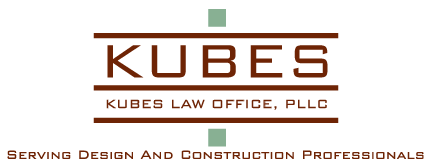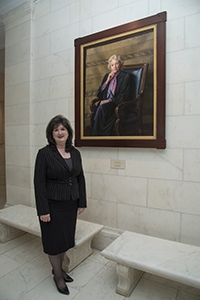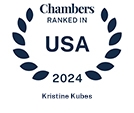Q&A with Kristine on her deep construction roots and new role as national chair
Finance & Commerce interviews Kristine on her practice and goals for the Construction Law Forum
Read it at Finance and Commerce magazine here
April 12, 2019 4:29 pm
Twin Cities attorney Kristine Kubes grew up in a construction family, so it should come as no surprise that her Minneapolis-based law firm caters heavily to the legal needs of builders, architects and engineers.This year, as Kubes Law Office celebrates its 10th anniversary, Kubes is taking her building bona fides to a new level as she assumes the chairmanship of the American Bar Association Forum on Construction Law.
Kubes will be only the second Minnesotan and the sixth woman to hold that prestigious position in the forum’s 43-year history. In that role, she will lead 6,000 forum members who represent contractors, design professionals and others in the building industry.
A practicing lawyer for 20 years, Kubes was appointed by then-Minnesota Gov. Tim Pawlenty in 2005 to serve on the state board that licenses design professionals in Minnesota. She’s also a member of the American Bar Association, American Council of Engineering Companies, American Institute of Architects, American Society of Interior Designers and the Association of Women Contractors.
In this interview, Kubes reflects on how she became interested in construction law, her construction roots, and her new leadership position in the industry. The interview has been edited for clarity and length.
Q. You mention that your mother and father were in the construction business. How did that influence you?
A. When I was a kid I had a high level of intellectual curiosity. My father at that time had his workshop in the garage on our home property. He had all of his tools there, he had a workbench. Whatever he was making, it would start there. I was intrigued by this. I would ask my father, “Can I come with you to the workshop?” And he let me go with him into the workshop under three conditions: I had to stand still, be quiet and don’t touch anything.
So I would just stand still. I learned and I would listen. I learned how to read a plan, I learned how to measure. I watched him use the tools and later, as I grew older, he taught me how to use some of the tools, and so I learned about the nature of construction.
When I grew older he would take me to construction sites and I would meet the other tradespeople and those kinds of things. I grew up understanding the value of trades, the value of craftsmanship.
Those gifts that I learned as a kid — seeing how things are made, how things work together, how trades work together on a site — have given me a tremendous benefit in my career as a construction lawyer.
Q. What are some of the biggest issues your clients face today?
A. Overall, I like to help my clients learn from whatever type of issue has been foisted upon them. Oftentimes they come to me because they are in a claim situation or they are having a payment problem with a client. After we get through the critical situation, it’s a great opportunity to look at, “What could we have done differently before and what can we do differently going forward to strengthen the business?” I use that mentality to help my clients be more proactive for themselves going forward.
As far as specific challenges, we certainly have a skilled labor shortage. I think it’s going to increase as we move ahead, which is a challenge because it relates to pricing, and price is a very key part of any construction and design transaction.
And another challenge would be the rise in popularity of the design-build model. It’s terrific in many ways, but it poses a lot of challenges because it causes the parties involved to relate to each other differently. There are challenges that arise when perhaps one of the parties involved in that equation is not as experienced with it or is perhaps risk adverse or is not a good communicator or not thinking ahead. I evaluate their role and response within that model and help them work that out.
Q. How many people do you have in your firm?
A. I have myself, I have a full-time paralegal, and I have one part-time lawyer who assists on a half-time, part-time basis as need. And then we have other service professionals that assist.
Q. You founded your firm in 2009 and have been practicing law for 20 plus years. You have seen a lot of ups and downs in the construction economy and the overall economy. How do those changes affect the type of work you do and the volume of work?
A. We always have work to do. The way my practice is set up, I assist clients proactively as well as responsively. I help them with entity issues, with contracting. I help them navigate through some issues that might arise on a project. I help them proactively with payment issues. I help them get paid before it becomes a lien claim, a bond claim, a lawsuit or whatever.
Responsively, I do litigation on their behalf. I defend them if they get sued, that whole thing. And I help them with their licensing issues.
Generally when the economy goes down, there are oftentimes more claims. There is not as much going on out there so every dollar on the table is worth fighting for kind of thing. We have ridden that wave up and down over the years. But I am happy to say we always have work.
Q. Talk about your new role with the American Bar Association.
A. I will be taking the post as the chair of the ABA Forum on Construction Law on Sept. 1. It is a national organization of construction lawyers; there are 6,000-plus members on the forum. There are people just like me from all over the nation and all over the world. We are the largest association of construction lawyers on the globe. It’s a huge honor. I was encouraged to throw my hat in the ring as a candidate for the chair and I am very honored to be elected.




